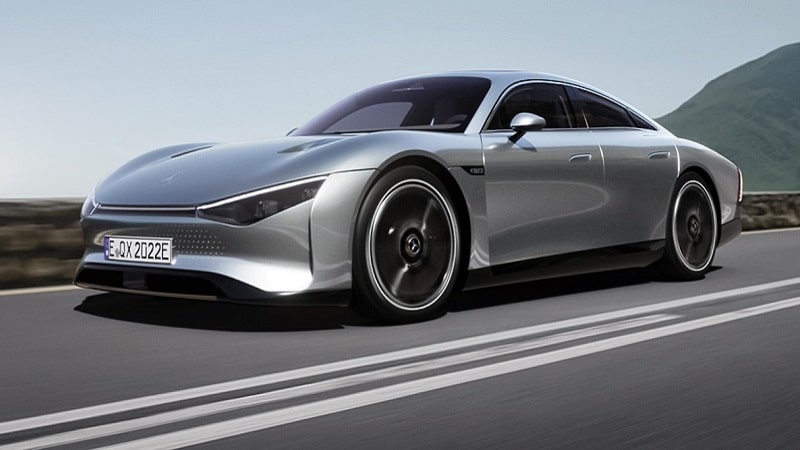[ad_1]
The Mercedes-Benz Vision EQXX covered 1,000 kilometers on a single charge. The electric sedan concept has left Germany to reach the south of France and more specifically the Cassis. Battery performance is impressive.
A few months after Mercedes-Benz officially unveiled its new electric sedan concept, the Vision EQXX, it has put its impressive range to the test on public roads in real conditions. Far behind the Tesla Model S and its 652 km of autonomy or the 530 km Porsche Taycan, Vision EQXX has a battery with a range of 1,000 km on paper.

To confirm this, Mercedes-Benz sent the electric sedan concept with sporty and futuristic lines. From Sindelfingen in Germany to Cassis in France. A route of just over 1,000 kilometers that takes into account variable weather conditions, traffic jams, construction sites and all the other hazards of the road.
Also read> Tesla Model S travels 1,210 km on new battery that doubles its range
1,000 km on a single 15% charge, promising performance for the Mercedes-Benz Vision EQXX
During its journey, the Vision EQXX passed through several European cities. After leaving Germany, it passed through Switzerland and Italy before arriving in the Mediterranean town of Cassis. He was driving an electric sedan an average of 86 kilometers per hour With outside temperatures ranging from 3 to 18°C.
the journey took 12 hours in total with two 15-minute breaks For switching drivers and checking tire pressure. More impressively, the electric car still had battery power after that long drive. According to Mercedes, it remained 15% fee on arrival in Cassis. Also, its average consumption was around 8.7 kWh / 100 km.
Finally, the full-scale test of the Mercedes-Benz Vision EQXX went better than expected. Its consumption was lower than expected and it still had some charge left when it arrived. According to Mercedes-Benz, the electric sedan could still go about 137 kilometers before it needs charging. To achieve this performance, the vehicle must be innovative 100 kWh air-cooled battery, a simplified aerodynamic profile and improved braking energy recovery. It also features lighter materials and solar panels on the roof to power the onboard electronics.
Source: engine1
[ad_2]
Source link